Pulling Off the Road
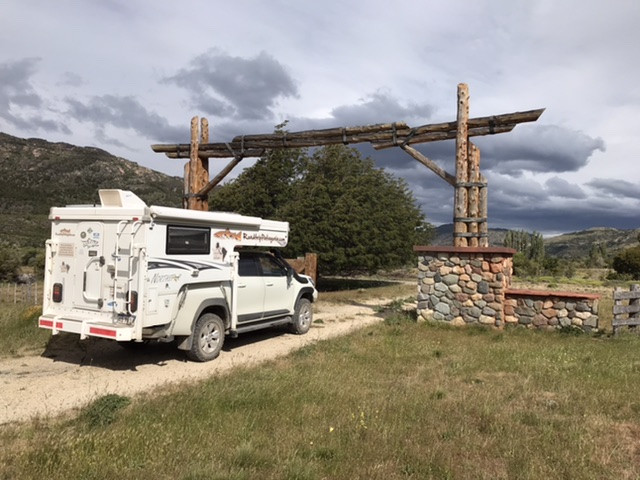
Before undertaking this trip we had read multiple books by persons who had gone before us on such adventures. All of them advised if you find some place you enjoy, get off the road to remain there to rest & regroup for a few days or as long as felt necessary.
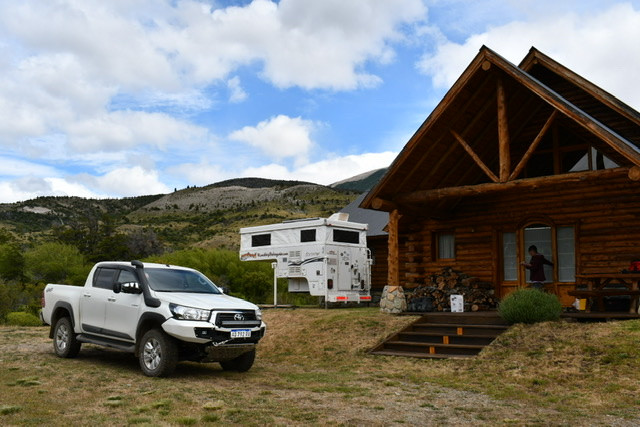
Our friends at Patagonia River Guides, Rance Rathie and Travis Smith, are under contract to caretake and thus access an estancia on the Rio Corcovado called Estancia Poncho Moro.
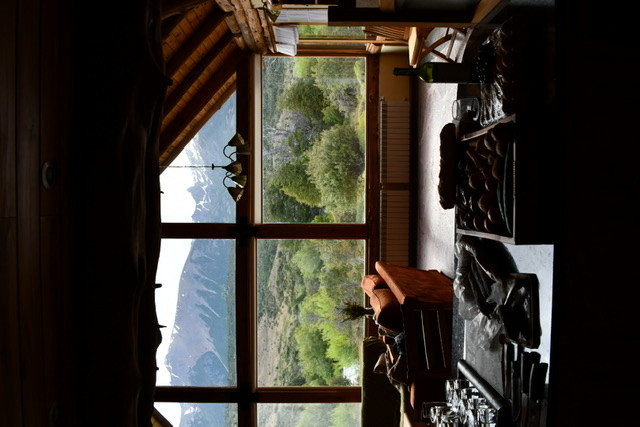
We learned the estancia can be rented per day. Our friend, Agustin, had checked the place and showed us some photos. It looked absolutely beautiful; the perfect place to regroup and rest after seven weeks on the road. We made arrangements to stay “four or five days”. Rance and Travis said we could stay as long as we wanted. We stayed a week. No phone. No Internet.
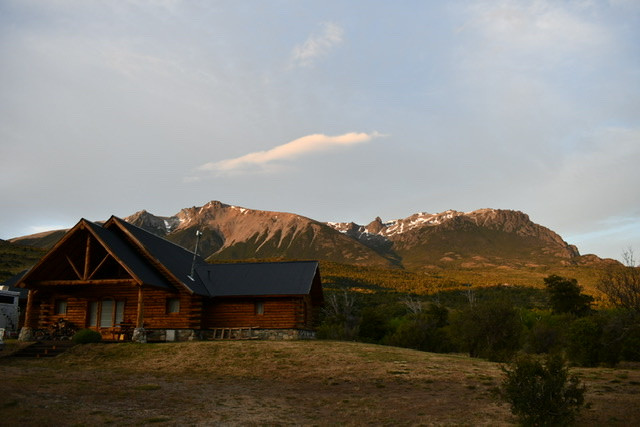
The estancia in its present size is over 62,000 acres of land comprising three total historic estancias. It’s a gigantic property that runs along the Andes. it’s defining feature is the Rio Corcovado, a river which pours out of a huge, crystal-clear lake straddling the Argentine/Chilean border called Lago General Vinter. The Corcovado then goes east into the Patagonian desert before switching back for a precipitous drop through the Andes into Chile and thus the Pacific Ocean.
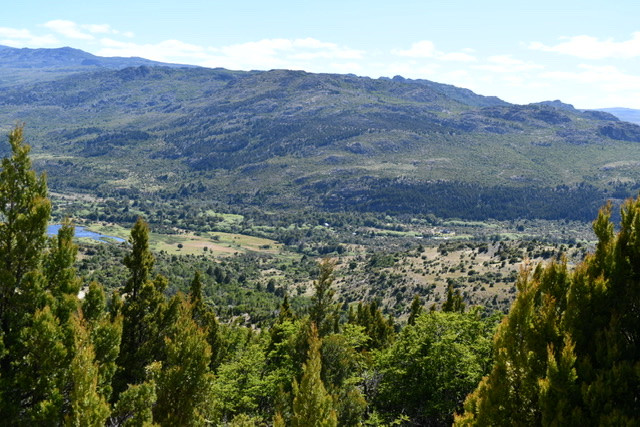
The Corcovado runs, and roars, about 75 feet from the Estancia lodge house in which we stayed. The roaring water was the perfect background sound for a week there.
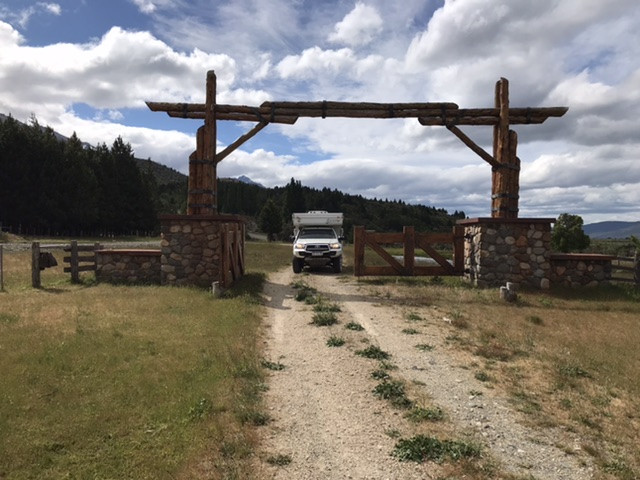
The estancia lodge where we stayed was constructed about 15 years ago by a person from the United States who had the idea of subdividing the property into mini-estancias and selling them to whomever. The classic signs of US subdivision development were evident everywhere. A large, empire-style gate, large enough to accommodate a mine truck, greets those entering the Estancia. An iron fabrication of the Estancias name, about 10 ft. across and 16 inches tall, was to hang as a banner across the gate. It now sits collecting dust inside a huge, rustic horse barn, made of logs and never used, built just inside the gate.
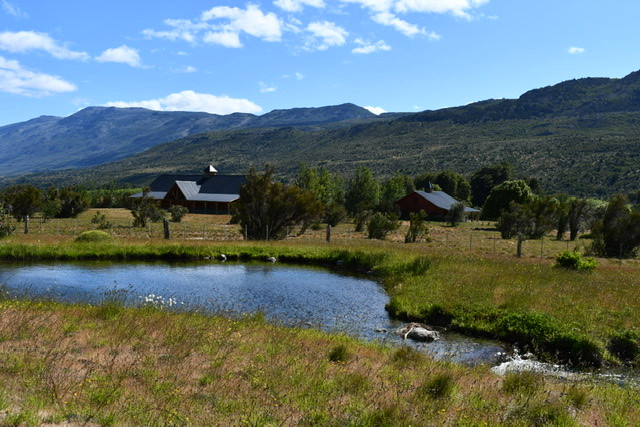
Alongside the horse barn is a matching utility building that contains a real estate sales office, complete with framed posters touting the storied history of the Estancia and a tabletop 3D scale model of the properties available for sale. All of it gathers dust and fades as the Austral sun passes by the windows day after day.
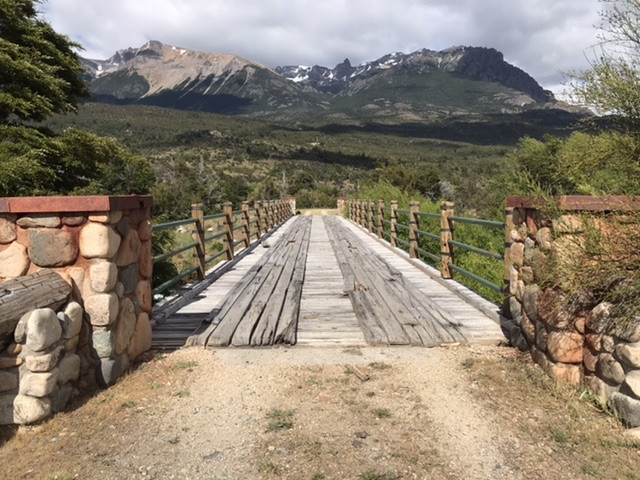
And impressive amount of infrastructure was put in place. A stream was diverted and large rocks were placed to create a series of tumbling ponds around the sales office. A network of roads, complete with stylish bridges to cross the Rio Corcovado and a myriad of side channels & arroyos, was developed to reach the various lot sites around the estancia.
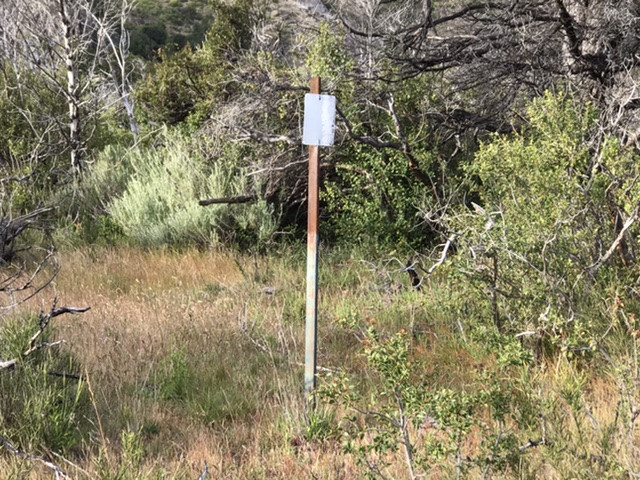
The lot markers now stand beside the roads, their numbers now obliterated by the sun and taken away, flake-by-flake, by the wind. A hydroelectric plant was built and leagues of cable were buried as were underground plumbing to bring water from the Rio Corcovado to the improvements. The exact location paths of these buried utilities are now a mystery. Stories of neglect & mismanagement by previous caretakers are attached to the place.
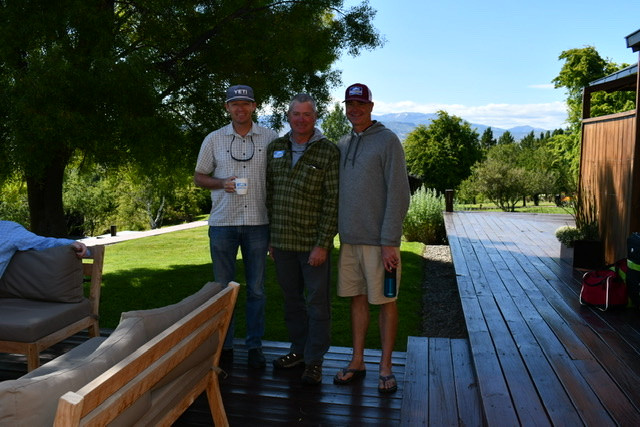
Enter Rance and Travis, the gringo lodge owners of Patagonia River Guides whose vision is far, integrity solid and attention to detail close. The owner asked them to watch the property while he attempts to find a buyer. (There are three huge connected parcels of land, boundaries of the original historic estancias, for those interested. Buy one or buy all. The prices, by US standards, seem ridiculously low.) in the meantime, the estancia is available to rent by the day for extremely reasonable rates. (Please inquire with PRG.).
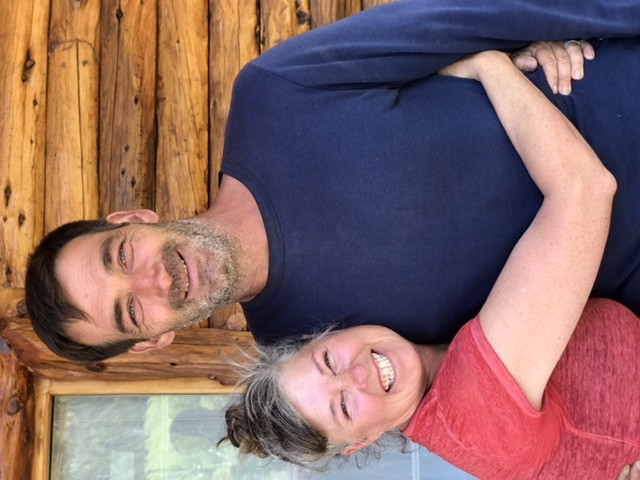
The rent-an-estancia program meant that we paid a daily rate and a cleaning fee. In the daily rate we were given full-run of the property for fishing or hiking along with our own gaucho, Nico, to run the generator as needed, keep us plied with firewood and cook us afternoon asados as we desired. We supplied the meat. We supplied all the groceries, for that matter, which, under the current exchange rates, are ridiculously cheap. Oh, yeah, we had to bring our own wine too, which is also ridiculously cheap. We did arrive to the Estancia to find it impeccably clean & appointed as is everything in the world of Patagonia River Guides. There was even a vase of fresh, fragrant flowers standing in the living room.
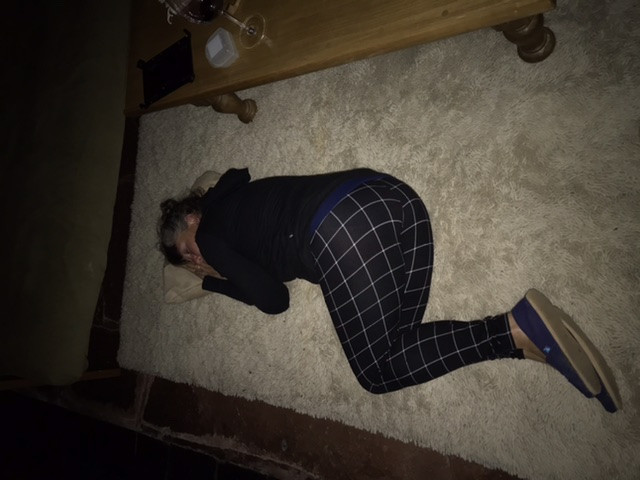
While the idea of having 150,000 hectares of land and a myriad kilometers of river & trout stream seemed immediately appealing to us, we found we were exhausted from our travels and previous fishing trips. A rest period was in order. We thus chose to spend most of our week holing-up, relaxing, and regrouping our equipment & supplies.
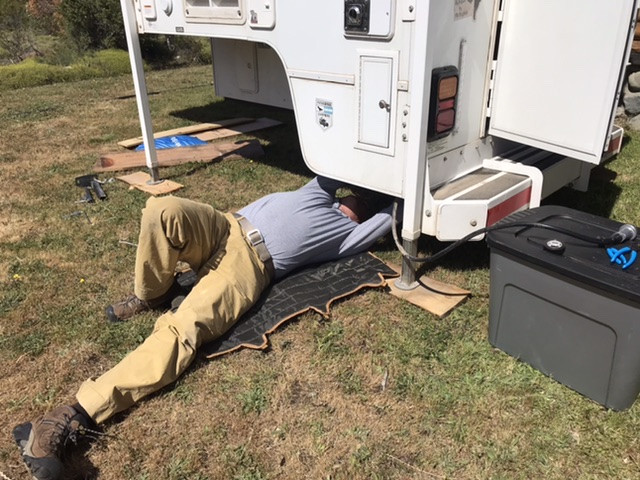
We did make one return trip to Trevelin and Esquel; told in another story; and we did take four fishing adventures: two adventures to El Lago Divorce-o; also told in another story; one adventure to a freestone creek and one adventure walking the Rio Corcovado and it’s side channels that ran through the immediate property.
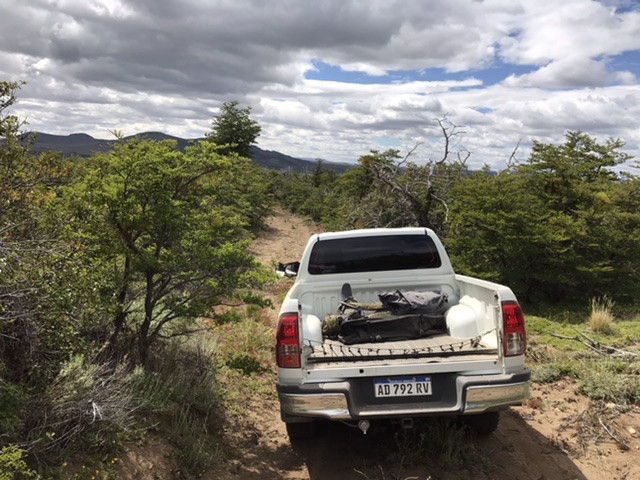
The freestone creek adventure took us 30 minutes up a switchback, washboard road, through two fences then on a wild, 30-minute 4 x 4 ride with inclines up to 45° & switchback turns combined. We went deep into the Estancia.
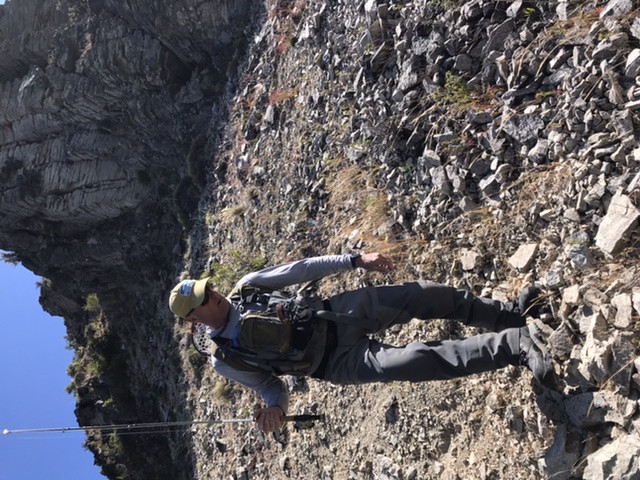
After yet another 30 minutes walking a canyon trail we reached the stream. The stones of this freestone creek were, at times, substantial, so, being in Severe Leisure Mode, we only fished a quarter-mile of stream.
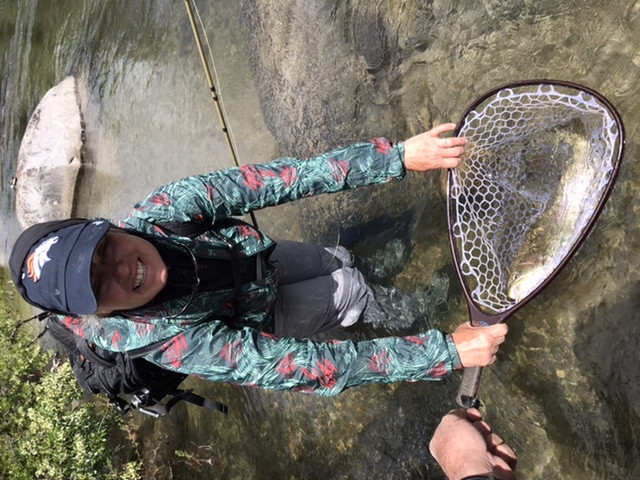
While we only caught four fish, three of the four were Rainbows 20 to 23 inches. They smashed beetle and cicada flies like they hadn’t had a meal in a week. funny thing is the stream was within two kilometers of the Estancia lodge at a place where the stream met the Rio Corcovado in a deep canyon.
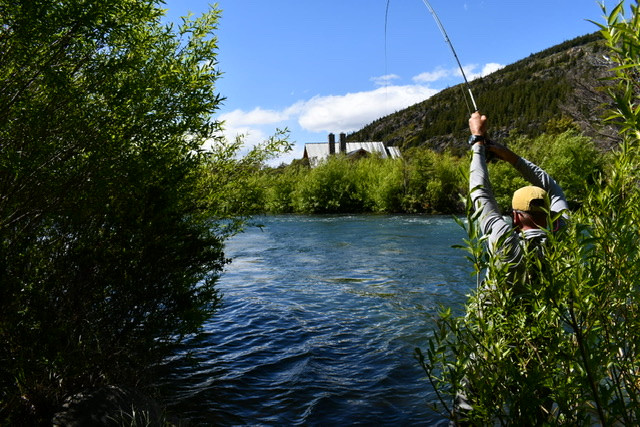
On the day we finished the river and side channels of the Corcovado in the immediate vicinity of the lodge, we did more looking and poking then actual fishing. The Rio Corcovado is a raging river with a steep decline. Patagonia River Guides fish it with a raft in various sections almost daily. It’s an exciting raft trip, and, from previous visits to PRG with their guides, I know it produces a lot of Rainbow and Brown Trout.
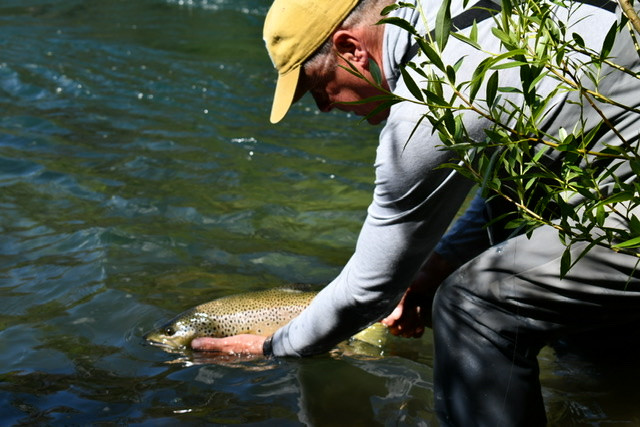
We could have tried harder on our foot trip but, I remind you again, we were on Severe Leisure Mode at this point. Four hours of fishing were enough before the the call of couch and fire lured us back to the lodge. Accessible fishing spots on the running water were few and far between because the side channels were highly overgrown with willows and the main river was the same. A person needed to find sharp corners on the main river with eddies to produce fish; each time we did we caught them. For instance, one eddie across from the lodge gave us a Rainbow Trout of 18 inches followed by a Brown Trout of 24 inches. Again, the fish literally crushed dry cicada patterns we flipped at them.
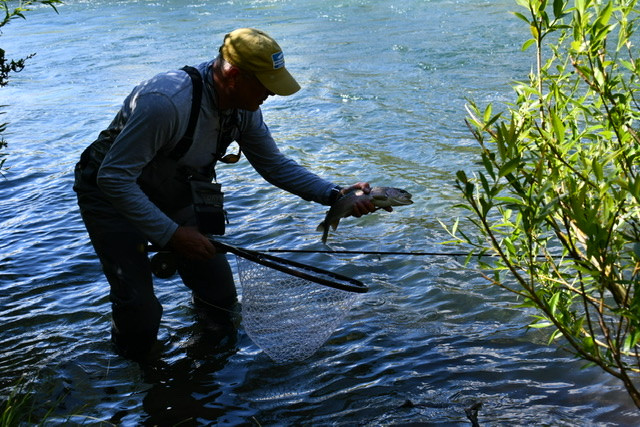
There is an artificial lake on the property created through diverting a stream. It was full of Magellan Geese and other unique South American waterfowl as well as interesting riparian song & shore birds. While there had the misfortune of a fairly big Brown smashing my dry cicada fly within six casts so we spent one of our three hours fishing that afternoon walking the circumference of that pond attempting to bring up more fish. Besides, there was no brush and, despite the wind, it was much easier to cast. The end result was: no luck.
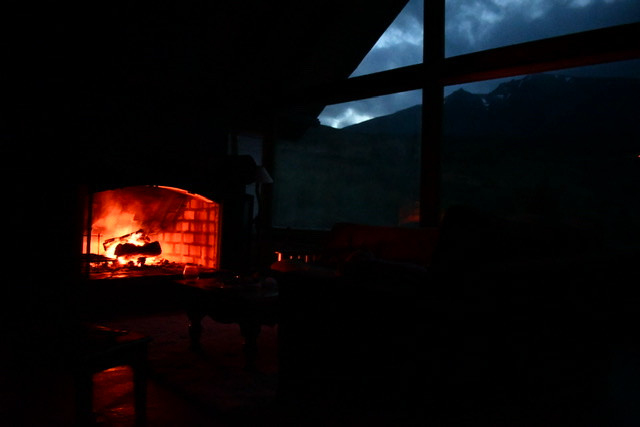
Yet, we felt to be the luckiest people on the planet. Each night, as the sun went down the silhouette of the Andes filled the front window of the lodge as a massive fire crackled in the fireplace. At night, the clear, dark sky featured stars of the southern hemisphere and glimpses of the Milky Way along the ribbon of the canyon. The Rio Corcovado roared constantly to fill our ears with the peaceful sound of flowing water. We were at the crossroads of forest, desert, and riparian habitat so when we walked, there was a cacophony of birds strange to us to hear while we watched them go about their business through binoculars.
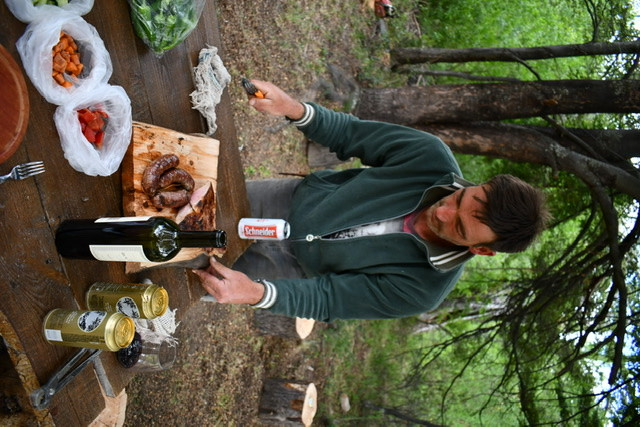
We had our own, personal gaucho to attend to the little things we needed like water, generator power, wood, and, on lazy afternoons, expertly cooked asados. We will always remember Nico. We met as strangers and we departed as friends.
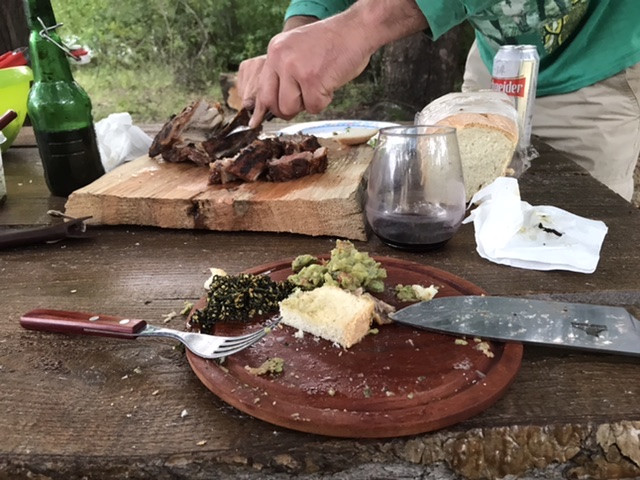
On our last night, as the sun was setting behind the Andes, we were beside the Corcovado eating a cut of beef called vacio; the belly muscle prized in Argentina yet probably ground into hamburger in the US. We noticed a large trout, about 15 ft. away, sipping mayfly spinners behind a log and within the secure confines of a den of willows. We accordingly named the dinner: “Comida con la trucha”; dinner with the trout.
